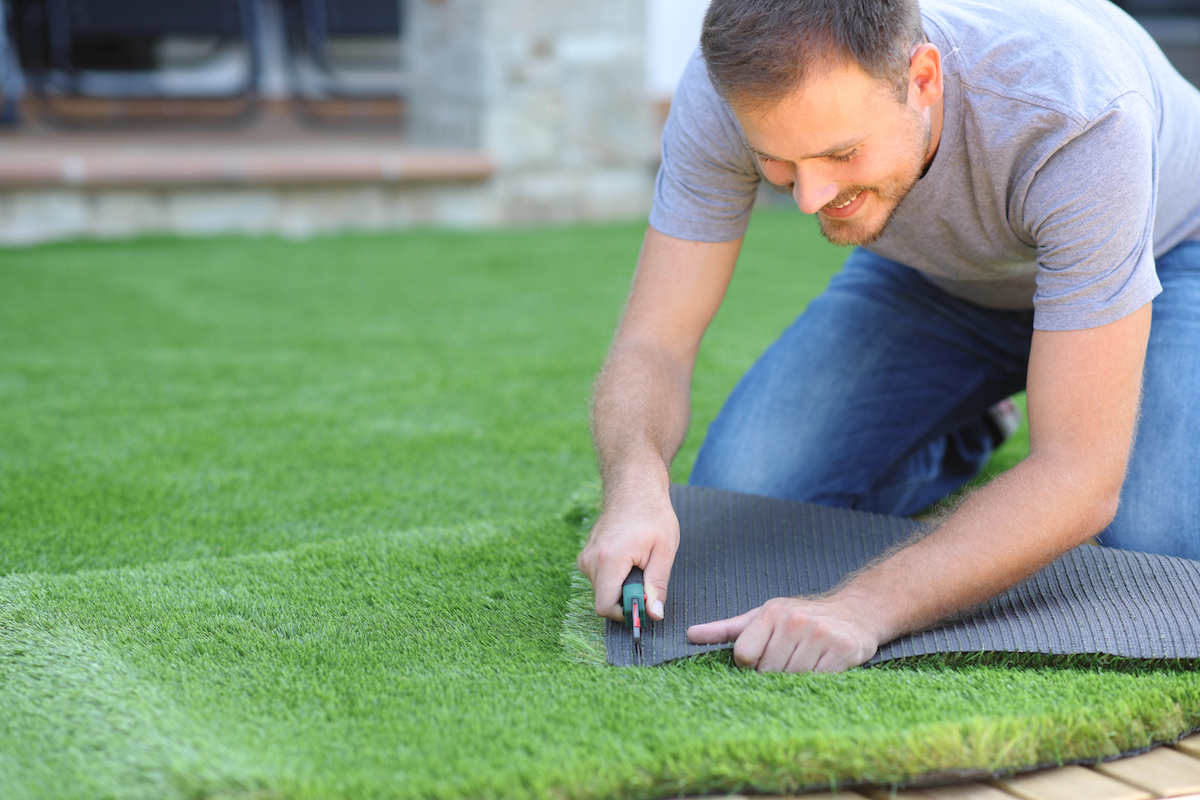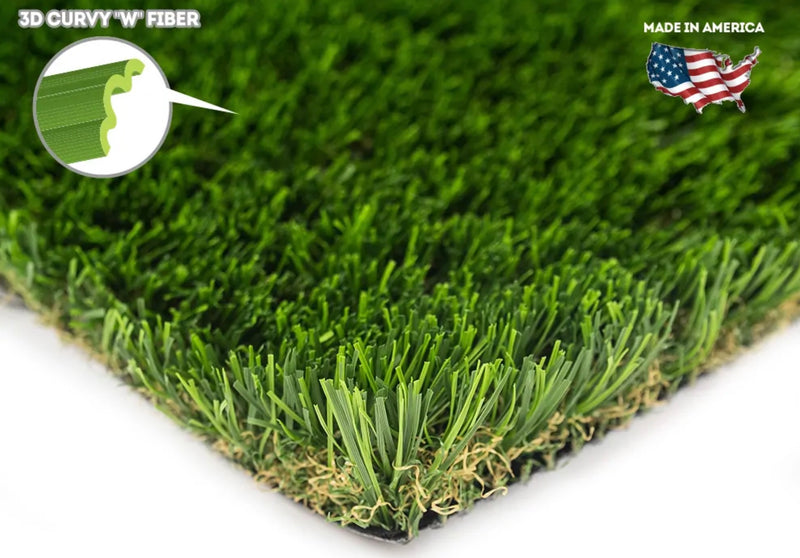Premier Phoenix Turf Companies Delivering Premium Synthetic Lawn Solutions
Premier Phoenix Turf Companies Delivering Premium Synthetic Lawn Solutions
Blog Article
Look Into the Environmental Perks of Opting for Synthetic Grass Solutions
The adoption of synthetic grass remedies presents a compelling chance to deal with pressing environmental difficulties. By significantly lowering water use and reducing the application of harmful chemicals, these alternatives not only advertise sustainable landscape design however also protect local ecological communities. In addition, the lower carbon impact related to decreased upkeep tasks adds to a much more lasting method to land monitoring. Nevertheless, the implications of these benefits expand past simple conservation initiatives, increasing concerns regarding their long-term effect on habitat preservation and total eco-friendly balance. Exploring these measurements reveals an intricate interaction worth thinking about.
Water Conservation Advantages
One of the most significant advantages of artificial turf is its capability to preserve water. Conventional turf yards require significant irrigation, specifically in locations susceptible to drought or water restrictions. In comparison, artificial turf does not require watering, dramatically decreasing the total need for water sources. This attribute is particularly helpful in arid regions where water scarcity is a pressing concern.
By eliminating the requirement for normal watering, synthetic grass adds to sustainable landscape practices and aids mitigate the environmental influence of extreme water intake. Additionally, the conservation of water reaches the reduction of overflow, which can lead to dirt disintegration and waterway pollution.
In addition, the setup of synthetic grass enables property owners and communities to assign water sources a lot more successfully, focusing on important uses such as alcohol consumption water and agriculture. The shift towards synthetic lawn not only promotes accountable water use yet additionally straightens with more comprehensive environmental goals targeted at protecting natural deposits.
As neighborhoods progressively focus on sustainability, the water conservation benefits of synthetic grass present a compelling situation for its fostering in property and industrial landscape design tasks.
Reduced Chemical Use
The transition to fabricated turf substantially lowers the dependence on chemical treatments commonly used in all-natural yard maintenance. Traditional grass monitoring generally entails the application of plant foods, herbicides, and chemicals to promote growth and control parasites. These chemicals can present dangers to human health, neighborhood wild animals, and the environment, contributing to dirt and water contamination.
In comparison, fabricated turf gets rid of the need for these hazardous materials. By minimizing the launch of synthetic substances right into the community, artificial turf promotes much healthier soil and water systems.
Furthermore, the lack of chemical drainage related to synthetic grass setups aids shield regional rivers from contamination, supporting aquatic life and preserving biodiversity. Artificial turf companies phoenix. As communities significantly focus on lasting practices, selecting fabricated lawn offers a feasible option that lines up with environmental preservation objectives. Via this shift, property owners can enjoy lush green rooms without endangering eco-friendly wellness, leading the way for a more sustainable future
Lower Carbon Footprint

Moreover, the setup of synthetic grass can lead to significant water preservation. All-natural lawns call for substantial amounts of water for irrigation, which not only contributes to the carbon impact related to water extraction and treatment however additionally strains local water sources. In contrast, synthetic grass needs marginal maintenance, needing no watering, thereby considerably reducing water usage and its connected energy costs.
In addition, the long life of synthetic grass adds to its decreased carbon try here effect. With a life-span of as much as 15 years or even more, the requirement for frequent substitutes is diminished, causing less waste and lower energy usage in production and disposing of traditional turf options. In general, artificial lawn offers a lasting option for environmentally conscious landscape design.
Habitat Preservation
Habitat preservation is an important consideration in the argument over landscaping selections, specifically when comparing man-made turf to all-natural yard. Natural grass yards usually need substantial maintenance, consisting of using herbicides, fertilizers, and chemicals, which can negatively impact local communities. These chemicals can leach into the dirt and rivers, damaging indigenous flora and animals and interfering with local environments.
Fabricated lawn removes the requirement for hazardous chemicals, consequently protecting neighboring wild animals and keeping the integrity of bordering ecological communities. The installment of artificial turf can lead to the conversion of previous yard locations right into even more biodiverse landscapes, such as pollinator yards or indigenous plant areas, which can sustain regional wildlife.
Inevitably, the change to fabricated lawn not only preserves water and decreases maintenance efforts yet additionally cultivates a much more harmonious relationship in between human activities redirected here and the natural surroundings, advertising habitat conservation at the same time.
Long-Term Sustainability
Lasting sustainability is a crucial consider examining the advantages of man-made lawn over typical lawn lawns. Among the most considerable benefits of fabricated lawn is its durability; it can last as much as 15-20 years with minimal upkeep, whereas natural turf needs regular reseeding and replacement. This longevity lowers the demand for continuous resources, such as water, fertilizers, and pesticides, which are vital for preserving a healthy turf lawn.
In addition, man-made grass adds to a decrease in carbon emissions related to grass care equipment. Standard lawns usually need imp source gas-powered lawn mowers, leaners, and blowers, every one of which add to air contamination. Phoenix turf companies. On the other hand, man-made lawn gets rid of the demand for such devices, promoting a cleaner atmosphere
Furthermore, the production of fabricated lawn progressively uses recycled materials, improving its sustainability account. As makers adopt eco-friendly practices, the ecological footprint of synthetic grass remains to decrease.

Conclusion
The adoption of artificial lawn options provides substantial ecological advantages, including significant water conservation, reduced reliance on harmful chemicals, and a lower carbon footprint. In addition, fabricated lawn help in preserving all-natural habitats by decreasing land disruption and advertising lasting sustainability through the usage of sturdy products. Collectively, these variables underscore the potential of synthetic grass to add favorably to ecological health and provide a sensible choice to standard landscaping practices in a progressively resource-conscious globe.
In comparison, synthetic turf does not need watering, significantly lowering the total need for water sources. By minimizing the release of artificial compounds into the ecological community, fabricated grass advertises healthier dirt and water systems.
Furthermore, the setup of artificial lawn can result in considerable water preservation. In contrast, artificial grass needs very little upkeep, calling for no watering, thus considerably reducing water usage and its linked energy expenses.

Report this page